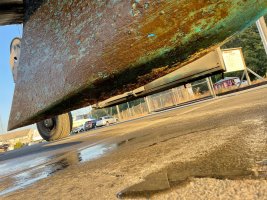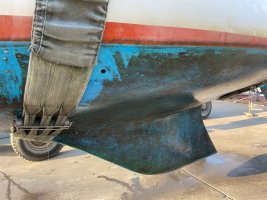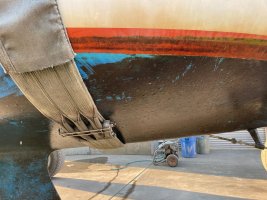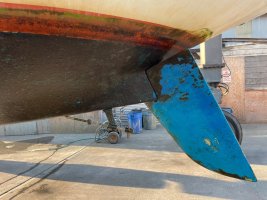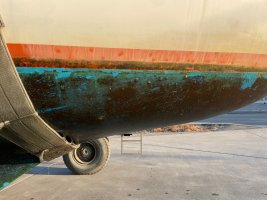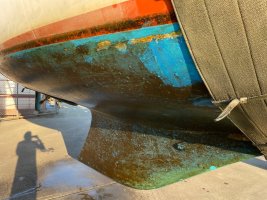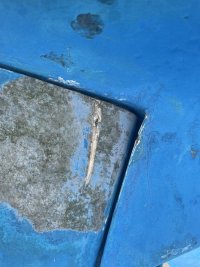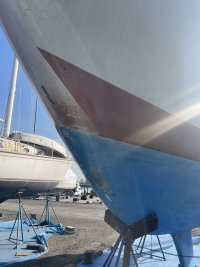Amontyg
Member I
Just had misty pulled out for bottom paint this morning. This is the first time I've had her out of the water, and there are a bunch of little blisters pretty much all over the hull.
This is a new topic for me, and I'm just gathering some information on if/how to address this. It appears the best way is to grind out each one, dry the hull, fill, and paint. That seems like a pretty large undertaking that will take quite a bit of planning and time commitment. I'd probably be doing this work myself, since paying someone to do this would probably cost more than I paid for her. My plan for now is complete painting, relaunch, and start planning how to deal with this.
A couple questions:
How serious of a problem is this? Should I be worried about structural integrity at this point?
If this isn't a structural issue yet, how long until it becomes one? I don't think with the winter coming I have enough time left this year to tackle a project like this, so it would be at least a year before I'd have time and ability to do anything about it.
Any alternative ways of handling this I haven't seen yet?
This is a new topic for me, and I'm just gathering some information on if/how to address this. It appears the best way is to grind out each one, dry the hull, fill, and paint. That seems like a pretty large undertaking that will take quite a bit of planning and time commitment. I'd probably be doing this work myself, since paying someone to do this would probably cost more than I paid for her. My plan for now is complete painting, relaunch, and start planning how to deal with this.
A couple questions:
How serious of a problem is this? Should I be worried about structural integrity at this point?
If this isn't a structural issue yet, how long until it becomes one? I don't think with the winter coming I have enough time left this year to tackle a project like this, so it would be at least a year before I'd have time and ability to do anything about it.
Any alternative ways of handling this I haven't seen yet?

